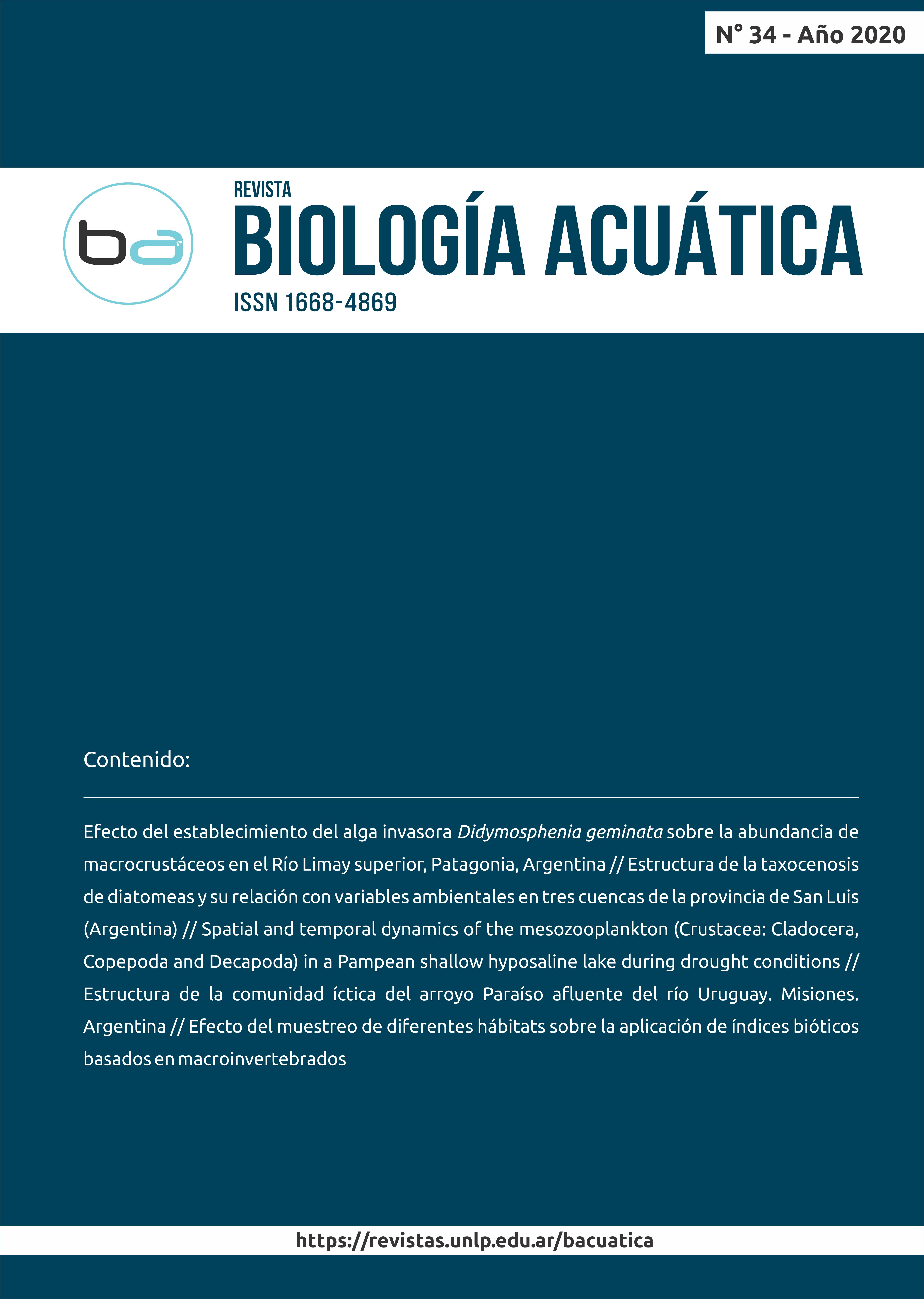Efecto del establecimiento del alga invasora Didymosphenia geminata sobre la abundancia de macrocrustáceos en el Río Limay superior, Patagonia, Argentina
DOI:
https://doi.org/10.24215/16684869e006Keywords:
Benthic invertebrates, invader species, littoral, Northern Patagonia.Abstract
Didymosphenia geminata (didymo) or “rock snot” is a diatom that develops extensive algal blooms covering the bottom of lentic and lotic ecosystems and exerting strong ecological changes. Given its distribution, abundance and trophic characteristics, and the importance as a food resource for aquatic and terrestrial vertebrates, the benthic crustaceans Aegla sp. and Samastacus sp. are key components in the transfer of matter and energy in lakes and rivers of Patagonia. We aimed to determine if didymo algal blooms occurring in the littoral zone of the Upper Limay River affect the abundance of both crustaceans. In the summer of 2016, 2017 and 2018 four locations of the river were surveyed, establishing reaches with and without the presence of didymo (CD with Didymo and SD without Didymo, respectively). We sampled the littoral zone in three habitats regarding the distance to shoreline (shore, shallow and deep). At each sample we recorded: number of macrocrustaceans, percentage of algae cover, algal growth characteristics (isolated colonies, mats), distance to the shoreline, depth, current velocity at bottom, among other variables. During the study, 855 Aegla riolimayana specimens were quantified with mean abundance of 10.0 ind/m2 and frequency of 73% and only 30 individuals of Samastacus spinifrons (0.3 ind/m2 and 4%, respectively). Given such differences, only A. riolimayana was analyzed. Its abundance did not differ between CD and SD reaches (P>0.05), though it was slightly lower in CD reaches (median = 1 vs. 2 ind./sample, respectively). Percent didymo cover was lower and A. riolimayana abundance was higher at shore compared to shallow and deep sectors. However, A. riolimayana abundance and percent didymo cover did not correlate suggesting that at the reach scale there is no negative effect of didymo on the abundance and distribution of A. riolimayana.





















